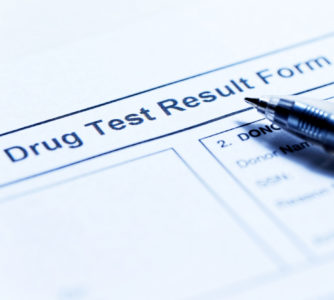 Most pain practices have the occasional patient who they suspect are on controlled substances. Since drug abuse has always been a major problem in society, and because clinics prescribe medications, most practices also screen patients for appropriate drug use and abuse.
Most pain practices have the occasional patient who they suspect are on controlled substances. Since drug abuse has always been a major problem in society, and because clinics prescribe medications, most practices also screen patients for appropriate drug use and abuse.
At the clinical level, drug screening is done in a number of ways, including testing blood, urine, or saliva samples for the presence of drugs. Some tests only show that a narcotic is present in the body, while others can tell how much of a drug is present. Depending on the circumstance, a provider may choose anyone of the different types of tests. Now a breathalyzer-type test is being developed to test for drugs of abuse.
Breath Tests For Drugs
A breath analyzer test has been done for decades for alcohol and now is being developed for marijuana, cocaine, fentanyl, PCP, and methamphetamine. These use a chemistry technique known as mass spectrometry so the test can identify the presence of certain chemicals and also help determine the level in the breath and possibly in the blood. Unfortunately for many of the compounds tested, there is not a standard for which these chemicals may cause impairment.
With marijuana, for example, we have no idea what level in the body correlates to any level of impairment compared to alcohol. The nice thing about this technique is that it is quick with the analysis being done in about 15 seconds. Currently the technology is very new and thus costly, but in the future it should be about $10,000 for a unit and be very portable.
For places looking to detect a very limited number of drugs of abuse, the breath analyzer will be good. For the pain practitioner, drug testing is more comprehensive. Usually a semi-quantitative screen of either urine or blood is used for drug screening. Most pain physicians want to know if the drugs a patient is supposed to be taking are in their systems and whether there are drugs that are present like street drugs that should not be in their system.
Most doctors also want to know if there are drugs not declared by the patient that may also be dangerous if taken with drugs they have prescribed. For the honest patient, drug screening should not be a worry. For those patients that are using street drugs or misusing their drugs, random testing often finds the problem. The patients who are misusing drugs often make mistakes and doctors discover them sooner or later.
In the midst of the opioid crisis and the high rate of misuse of prescription medicines, safe prescribing of any treatment for a pain patient always becomes a concern. There are many treatments for pain with medications being only a limited modality in the overall scheme of options. The use of addictive medications such as opioids is even less attractive since it often worsens pain and becomes ineffective over very short period of time for many people. Drug testing is one of the tools toward safe prescribing that needs to be implemented in pain clinics throughout the country.